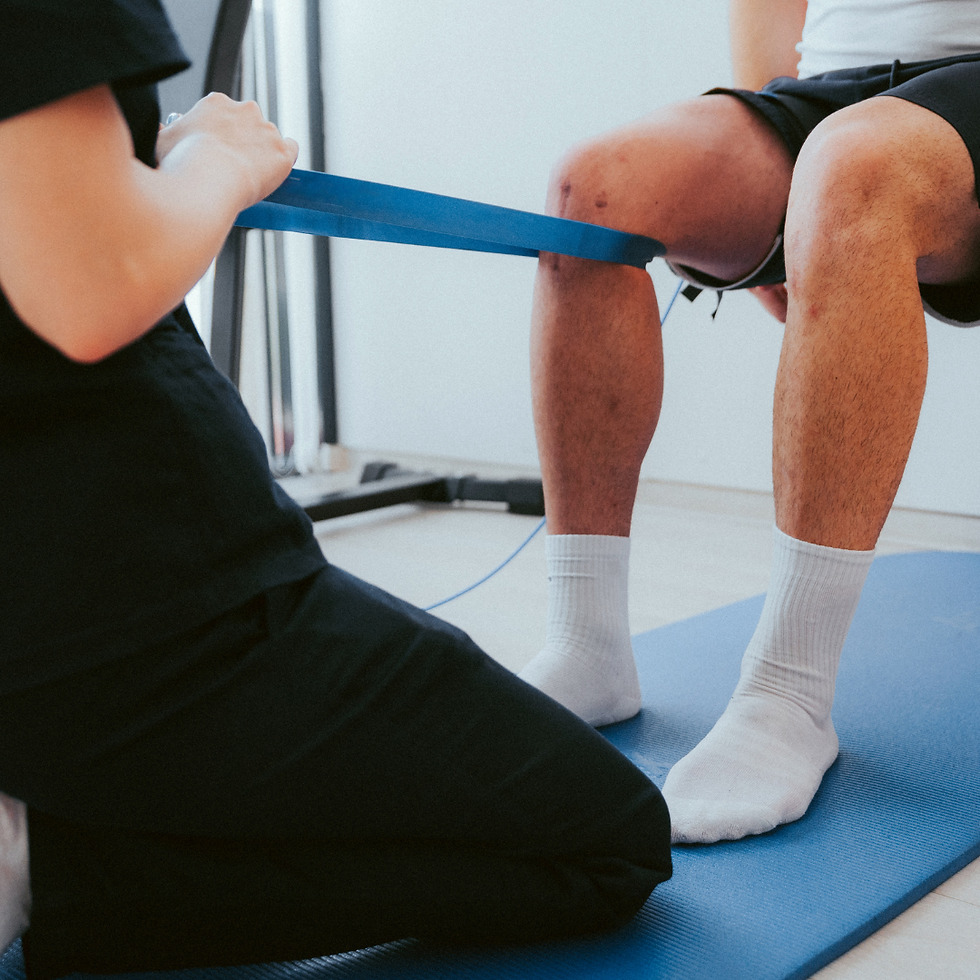Why Progressive Loading is VITAL for Injury Recovery
- Priscilla Lim

- Nov 29, 2024
- 2 min read
Updated: Jun 20
A ProVital Physiotherapy Guide
Injured tissues such as muscle, tendon, or ligament don’t simply “grow back stronger” without guidance. Recovery is a process that needs the right stress, at the right time, in the right amount. Here’s why:
1. Healing Phases: What Really Happens in Injured Tissue?
After an injury, our body repairs the damage through three critical stages:
· Inflammation (0–7 days):
The body clears damaged cells and sets the stage for healing.
· Proliferation (7–21 days):
New collagen fibers are formed, but these fibers are disorganized, weak (mostly Type III collagen), and not yet able to bear normal physical stress.
· Remodeling (Up to 12 months):
Only through progressive, controlled loading do these fibers realign, mature into strong Type I collagen, and regain proper structure and function.
Without mechanical stress, this process stalls, leaving the scar tissue weaker, stiffer, and prone to re-injury.

2. The Science: Why Load Matters?
Our body naturally adapts to the stress we place on it. This is explained by two well-established principles:
• Wolff’s Law (Bone): Bone strengthens and reshapes according to load direction and magnitude.
• Davis’ Law (Soft Tissue): Muscles, tendons, and ligaments also adapt, realigning their fibers along the lines of regular stress.
When tissue isn’t loaded progressively after injury, collagen remains disordered and fragile, increasing the risk of future strains, tears, or chronic stiffness.
3. What Happens If we Skip Loading?
Without gradual strengthening:
• Collagen remains immature (Type III),
• The tissue becomes stiffer and poorly aligned,
• There’s reduced ability to withstand everyday forces,
• Risk of re-injury or chronic discomfort rises.
This is why simple rest alone is not enough.
4. Clinical Evidence Supports Progressive Loading
Across multiple injuries such as tendinopathy, ligament sprains, or muscle strains, rehab guidelines highlight the need for:
✔ Progressive resistance loading
✔ Eccentric strengthening
✔ Functional rehabilitation tasks
These steps restore tensile strength and prepare the tissue for real-life demands.

Conclusion: Why Rehab Plan Should Include Strengthening
Progressive loading isn’t just “extra”, it’s the difference between temporary recovery and lasting strength. Without proper loading and exercise, the risk of re-injury remains high, and full function may never return.
Our rehab program is tailored to respect these healing principles, guiding you from early protection to confident, strong return to activity.
ProVital ; Physio Provider, Better together
References:
1. Cook, J. L., & Purdam, C. R. (2009). Is tendon pathology a continuum? British Journal of Sports Medicine, 43(6), 409–416. https://doi.org/10.1136/bjsm.2008.051193
2. Magnusson, S. P., & Kjaer, M. (2019). The impact of loading, unloading, ageing and injury on the human tendon. The Journal of Physiology, 597(5), 1283–1298. https://doi.org/10.1113/JP275450
3. Grävare Silbernagel, K., Thomeé, R., Eriksson, B. I., & Karlsson, J. (2007). Comparison of eccentric and concentric training in Achilles tendinopathy. Scandinavian Journal of Medicine & Science in Sports, 17(1), 74–81. https://doi.org/10.1111/j.1600-0838.2006.00522.x
4. Frost, H. M. (2004). A 2003 update of bone physiology and Wolff’s Law for clinicians. The Angle Orthodontist, 74(1), 3–15. https://doi.org/10.1043/0003-3219(2004)074<0003:AUOBPA>2.0.CO;2


